Sample information |
|
| Picture |
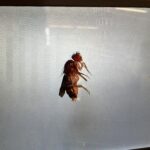
|
|---|---|
| Location | |
| Collection date | 02/18/2025 |
| Captive / Cultivated? | Captive / Cultivated |
| Group | Berkshire Community College |
| Observations | This Fruit Fly was a part of a captive colony on the Berkshire Community College Campus. It has big red eyes, three pairs of walking legs, and one pair of wings for flying. |
| Putative identification | Arthropoda Insecta Diptera |
Methods |
|
| Extraction kit | Monarch DNA extraction (NEB) |
| DNA extraction location | Whole arthropod |
| Single or Duplex PCR | Single Reaction |
| Gel electrophoresis system | Edvotek Gel Electrophoresis |
| Buffer | TAE |
| DNA stain | SYBR Safe |
| Gel images |

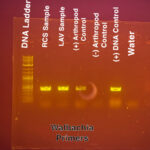
|
| Protocol notes | We followed the DNA extraction protocol with no issues. The 1.5ml tubes were incubated for 37 minutes. We followed the insect adaptation of the protocol. On March 6th 2025, we set up for a PCR reaction using arthropod primers. Taq Polymerase used: New England Biolabs OneTaq Hot start. Our samples were ran in the thermal cycler: 1 cycle for 30 seconds at 94C, 30 cycles for 30 seconds at 94C, 30 cycles for 45 seconds at 49C, 30 cycles for 60 seconds at 68C, 1 cycle for 5 minutes at 68C, and held indefinitely at 4C. On March 25th 2025, we set up for another PCR reaction, this time using Wolbachia primers. We followed the same protocol as with the arthropod primers, the one difference being, the annealing temperature was 55C this time. We used the NEB OneTaq Hot Start DNA Polymerase, and held indefinitely at 4C. |
Results |
|
| Wolbachia presence | Yes |
| Confidence level | High |
| Explanation of confidence level | We are very confident that our experimental results are valid based on our results for the four control lanes (+ Arthropod Control, – Arthropod Control, DNA Control, Water). We had bright bands (approximately 438bp in size) visible in the positive control lanes, and no bands in the negative control lanes, verifying that there was no contamination across all lanes. |
| Wolbachia 16S sequence | Download AB1
TGGCTGTCGTCAGCTCGTGTCGTGAGATGTTGGGTTAAGTCCCGCAACGAGCGCAACCCTCATCCTTAGTTACCATCAGG TAATGCTGGGGACTTTAAGGAAACTGCCAGTGATAAACTGGAGGAAGGTGGGGATGATGTCAAGTCATCATGGCCCTTAT GGAGTGGGCTACACACGTGCTACAATGGTGGCTACAATGGGCTGCAAAGTCGCGAGGCTAAGCTAATCCCTTAAAAGCCA TCTCAGTTCGGATTGTACTCTGCAACTCGAGTGCATGAAGTTGGAATCGCTAGTAATCGTGGATCAGCACGCCACGGTGA
BLAST at The Wolbachia Project BLAST at NCBI
|
| Arthropod COI sequence | Download AB1
AGTTGGAACATCTTTAAGAATTTTAATTCGAGCTGAATTAGGACATCCTGGAGCATTAATTGGAGATGATCAAATTTATA ATGTAATTGTAACTGCACATGCTTTTATTATAATTTTTTTTATAGTTATACCTATTATAATTGGTGGATTTGGAAATTGA TTAGTGCCTTTAATATTAGGTGCTCCTGATATAGCATTCCCACGAATAAATAATATAAGATTTTGACTTCTACCTCCTGC TCTTTCTTTACTATTAGTAAGTAGAATAGTTGAAAATGGAGCTGGGACAGGATGAACTGTTTATCCACCTCTATCCGCTG GAATTGCTCATGGTGGAGCTTCAGTTGATTTAGCTATTTTTTCTCTACATTTAGCAGGAATTTCTTCAATTTTAGGAGCT GTAAATTTTATTACAACTGTAATTAATATACGATCAACAGGAATTTCATTAGATCGTATACCTTTATTTGTTTGATCAGT AGTTATTACTGCTTTATTATTATTATTATCACTTCCAGTACTAGCAGGAGCTATTACTATATTATTAACAGATCGAAATT TAAATACATCATTTTTT
BLAST at The Wolbachia Project BLAST at NCBI
|
| Summary | The Diptera was found to be postive for Wolbachia. |
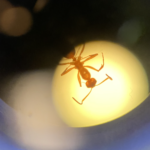 Formica Pallidefulva
Formica Pallidefulva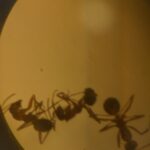 Formica Pallidefulva
Formica Pallidefulva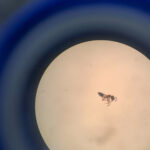 Ant
Ant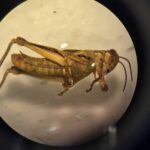 Differential Grasshopper – Melanoplus differentialis
Differential Grasshopper – Melanoplus differentialis Pill Bug (Armadillidium vulgare) – Draft
Pill Bug (Armadillidium vulgare) – Draft